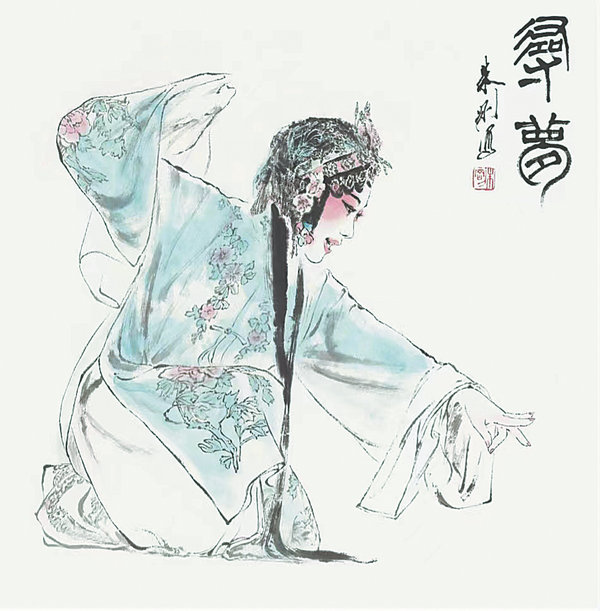

The Jiudianshui Art Museum opened in the Caohejing Development Zone in Shanghai on Saturday. The name translates to "nine water drops".
The museum is a private institution of Shanghai Yunwenbojian Information Technology, a company that helps public museums to digitize their collections of Chinese art and antiques.
The opening exhibition, Masters' Paintings and Calligraphy Since the Ming Dynasty (1368-1644), features more than 80 artworks by renowned artists, from ancient masters such as Wen Zhengming and Zhu Da, to representative figures of the 20th century such as Qi Baishi and Liu Haisu.
"Most of the ancient artworks were borrowed from private collectors," says Chen Yulin, founding president of Yunwenbojian and director of the new museum. "These artworks have been passed down the generations with clean and traceable records, appreciated by renowned scholars and important collectors."
One of the exhibits, a calligraphy scroll by Dong Qichang (1555-1636), was flown into Shanghai just days before the opening after it was sold for 2.82 million yuan ($442,700) at the Poly Auctions autumn event in Beijing.
Spanning 1,000 square meters, the new museum will focus on traditional Chinese art and collaborate with private collectors and public museums, Chen says.
According to Wu Yanxin, head of the administration for culture and tourism of Xuhui district, Caohejing zone is a leading center for high-tech industries and houses some 300,000 professionals.
"We have had quite a number of outstanding museums in Xuhui district, but most of them are located along the Huangpu River.
"The founding of the Jiudianshui Art Museum has filled a big gap in the cultural life of this area," says Wu.
Wu notes that many of the tech companies in this area are game and content developers whose work often involves elements of traditional art and culture.
The new museum, Wu adds, will provide these companies with the chance to learn more about culture and hence avoid misrepresentation of cultural or historical facts.
The museum will seek to become rooted in the community and initiate a range of educational programs, Chen says.
Located on the first floor of the museum is a special showroom with an interactive screen that Yunwenbojian created in collaboration with more than 300 museums in China.
Wu Di, an engineer in charge of the project, says through this special screen visitors can view interactive displays of ancient artworks from all angles, something that is not possible with physical exhibits.
If you go
Masters' Paintings and Calligraphy Since the Ming Dynasty
10 am-5 pm, until March 27. Jiudianshui Art Museum, Building C2, 198 Yizhou Road, Xuhui district, Shanghai.